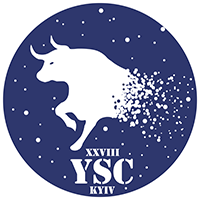Speaker
Description
22.2 GHz water masers are generally associated with massive star formation. Recently, a very strong nuclear kilomaser, W1, has been found in a nearby galaxy (NGC 253) that is associated with a forming super star cluster. It has been proposed that kilomasers could arise from the accretion disc around supermassive stars (>1000 Msun). Such hypothetical stars are proposed candidates for polluters responsible for the chemical peculiarities in the globular clusters, i.e. large variations in light elements; the main one being O-Na, C-N and Mg-Al anticorrelations. Additionally most of the globular clusters demonstrate multiple sequences in the colour-magnitude diagram, proving that they host multiple stellar populations. It has been suggested that the second population forms from the hot-hydrogen burning yields of the first population via self-enrichment. At the present time it is very hard to observe supermassive stars due to their location. The candidate forming massive clusters are located outside the Milky Way with very dense centers, where the hypothetical star would be obscured by gas and dust. The supermassive stars would form via runaways collisions, simultaneously with the cluster, hence their disc is perturbed by stellar flybys, inspiralling and colliding stars. This raises the question if an accretion disc would at all be able to survive in such a dynamic environment and mase water lines.
We investigated what the predicted MASER spectrum of such a disc would look like using 2D hydrodynamic simulations and compared this to the W1 kilomaser in NGC 253. We derived model maser spectra from the simulations by using a general maser model for appropriate disc temperatures against velocity along the line of sight. All our our model discs survived. The model maser spectra for the most destructive case for the simulations of M = 1000 Msun are a good match with W1 kilomaser spectrum in terms of scaling, flux values and some of the signal trends. For the more massive star of 10,000 Msun the spectra start to resemble megamasers from AGNs rather than stellar masers. Our investigations thus support the hypothesis that kilomasers could pinpoint supermassive stars.

